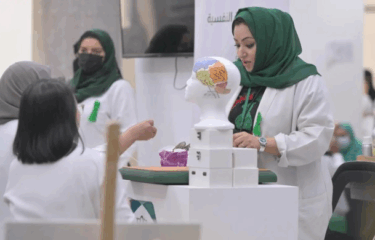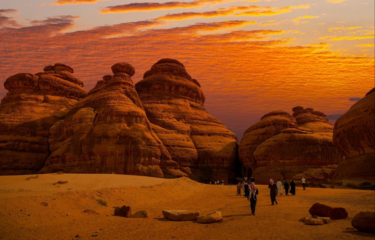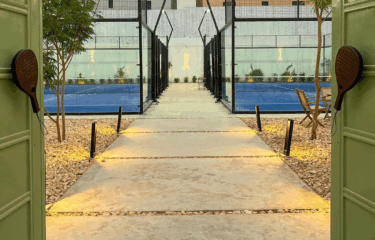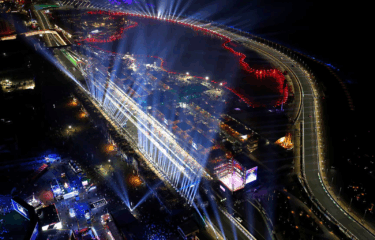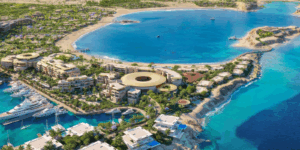For centuries, the Hajj and Umrah pilgrimages have been a journey of the heart. Millions arrive in Makkah and Madinah each year to walk in the footsteps of prophets, seek forgiveness, and reconnect with faith. But behind the scenes of these sacred moments, there is a quiet transformation unfolding.
Today, technology is becoming a bridge between tradition and ease. The Pilgrims’ Digital Gateway is no longer a vision of the future. It is how millions now experience one of the most important journeys of their lives.
From Paper Trails to Seamless Journeys
Pilgrimage used to come with a stack of papers: permits, accommodation forms, booking slips. Long queues. Confusing logistics. Delays. But with growing pilgrim numbers, the Kingdom of Saudi Arabia knew something had to change.
Then launched the Pilgrim Experience Program, under Saudi Vision 2030. Its mission is to create a spiritual journey that is smooth, safe, and deeply personal. And at the heart of it is a digital network built around pilgrims’ needs.
Nusuk: The Official Digital Companion
The Nusuk platform has become a lifeline for pilgrims traveling to Saudi Arabia. Through Nusuk.sa, users can book flights, secure visas, reserve accommodations, and organize transportation—all in one place. Available in seven languages, it helps pilgrims from over 60 countries customize their trip according to budget, schedule, and preferences.
But Nusuk does more than bookings. It offers historical context for Islamic landmarks. It explains rituals step-by-step. It answers questions that pilgrims might hesitate to ask. In short, Nusuk is the guide many wished they had.
By streamlining services, this Pilgrims’ Digital Gateway reduces reliance on travel agents, cuts costs, and ensures pilgrims have direct access to official services. It reflects Saudi Arabia’s shift toward transparency, accessibility, and smarter hospitality.
Tawakkalna and the Manasik Gate
For residents and citizens within Saudi Arabia, the Tawakkalna app provides a local solution. It started during COVID-19, but its role expanded quickly. The “Manasik Gate” inside the app allows users to book Umrah permits and schedule rituals.
During peak seasons like Ramadan, pilgrims can choose specific time slots for Tawaf and Sa’i, a system that has helped control crowds and improve the overall experience inside the Grand Mosque.
Tawakkalna also syncs with Absher, Saudi Arabia’s digital ID platform, so pilgrims don’t need to carry documents. A new smart card now holds biometric data, easing entry points at airports, transport hubs, and hotels.
The results are clear: faster check-ins, fewer mistakes, and more time spent focused on worship instead of waiting in lines.
Pilgrim Preparedness Beyond Borders: The Pak Hajj App

Saudi Arabia isn’t the only one rethinking pilgrimage. In 2024, Pakistan launched the Pak Hajj App to support its own pilgrims. Developed by the National IT Board, the app offers offline maps, multilingual support, and real-time location sharing. Pilgrims can track their group, find routes to key sites, and contact emergency services without needing constant internet.
The app’s data also connects with Pakistan’s Ministry of Religious Affairs, giving officials a better view of each pilgrim’s journey. That means faster problem-solving, reduced delays, and a safer experience overall.
It’s proof that this Pilgrims’ Digital Gateway isn’t just a Saudi project. It’s a growing global collaboration.
Kawal Haji: A Digital Helping Hand for Indonesian Pilgrims
In the swirl of crowds and rituals, Kawal Haji offers something simple. Peace of mind.
This new app, launched by Indonesia, is built for pilgrims to keep them connected, supported, and safe. If someone gets lost, they can be found. If there’s an issue with transport, food, or accommodation, it can be reported in a few taps.
More than just tech, Kawal Haji feels like a companion in your pocket. It speaks your language. It knows where you are. And it’s there when you need help. Quietly, efficiently, without fuss.
For the 221,000 Indonesian pilgrims taking part this year, it’s one less thing to worry about, and one more way to stay present during the journey.
Smart Tools Behind the Scenes
The face of technology during pilgrimage might be a sleek app, but behind it is a web of innovation. Here’s what powers today’s smart Hajj and Umrah experience:
- Artificial Intelligence predicts peak crowd times and helps redirect foot traffic, especially in high-pressure areas like Jamarat.
- Facial recognition is used at entry points to speed up ID checks and reduce wait times.
- Smart wristbands with GPS and health monitors track pilgrims’ wellbeing and alert medics if someone is at risk of heat exhaustion.
- IoT sensors in tents, buses, and bathrooms adjust water and power use, minimizing waste and improving comfort.
Together, these tools turn a once-overwhelming journey into something far more manageable.
Accessibility and Inclusion: Reaching Every Pilgrim
Not everyone is tech-savvy. Many older pilgrims don’t own smartphones. Others come from regions with limited internet access. To make the Pilgrims’ Digital Gateway truly inclusive, Saudi Arabia has opened multilingual help centers, trained volunteers, and built Wi-Fi stations across holy sites.
Workshops are also offered abroad. In Pakistan, for example, pre-Hajj sessions teach people how to use the Pak Hajj App. The goal is that no pilgrim should feel left behind.
Data Security and Ethical Use
With digital access comes responsibility. Platforms like Nusuk and Tawakkalna store personal and biometric data, raising important questions about privacy. To address this, Saudi Arabia has started using blockchain technology to protect user information. It also limits data access to verified personnel and uses encrypted systems to store sensitive files.
Still, the conversation continues. How do we balance safety and surveillance? Can sacred spaces remain spiritual while becoming more monitored? These are questions that will shape the next phase of digital pilgrimage.
What’s Coming Next?

As the Pilgrims’ Digital Gateway evolves, the future looks even more immersive. New tools are being tested and planned:
- AI-powered chatbots that answer ritual-related questions in real time.
- Virtual reality tours for those with mobility challenges, allowing them to experience parts of the pilgrimage from a safe space.
- Green Hajj tracking tools to help pilgrims monitor their carbon footprint and offset it through tree-planting programs.
- Unified digital systems through the OIC to standardize Hajj registration, health records, and emergency protocols across all participating nations.
A Journey Anchored in Faith, Powered by Innovation
What hasn’t changed is the heart of the pilgrimage. Whether a pilgrim is performing Tawaf or whispering prayers on the plains of Arafat, the experience remains deeply spiritual.
But how they get there, how they navigate, and how they stay safe, that’s what the Pilgrims’ Digital Gateway is transforming.
From Nusuk and Tawakkalna to Pak Hajj and beyond, these innovations aren’t about replacing tradition but about protecting it. About making sure that every pilgrim, regardless of where they come from or how tech-savvy they are, has a chance to experience their journey with ease, dignity, and peace.
And in that quiet balance between faith and function, the future of pilgrimage is being built—one line of code, one smart card, one dua at a time.
FAQs
What is the Pilgrims’ Digital Gateway?
The Pilgrims’ Digital Gateway refers to integrated platforms like Nusuk and Tawakkalna that streamline Hajj and Umrah services using digital tools.
How does Nusuk help during Hajj and Umrah?
Nusuk offers visa services, accommodation booking, transport coordination, and ritual planning in one user-friendly platform for pilgrims.
What are the benefits of smart Hajj solutions?
Smart Hajj solutions improve safety, reduce crowding, simplify logistics, and offer real-time support during pilgrimage through apps and wearables.
Can international pilgrims use digital platforms for Umrah?
Yes, international pilgrims from over 60 countries can use Nusuk and related platforms to plan and manage their entire Umrah journey.
What role does Saudi Vision 2030 play in Hajj digitization?
Saudi Vision 2030 prioritizes pilgrimage innovation by investing in digital transformation to improve pilgrim experience and manage increasing numbers.


